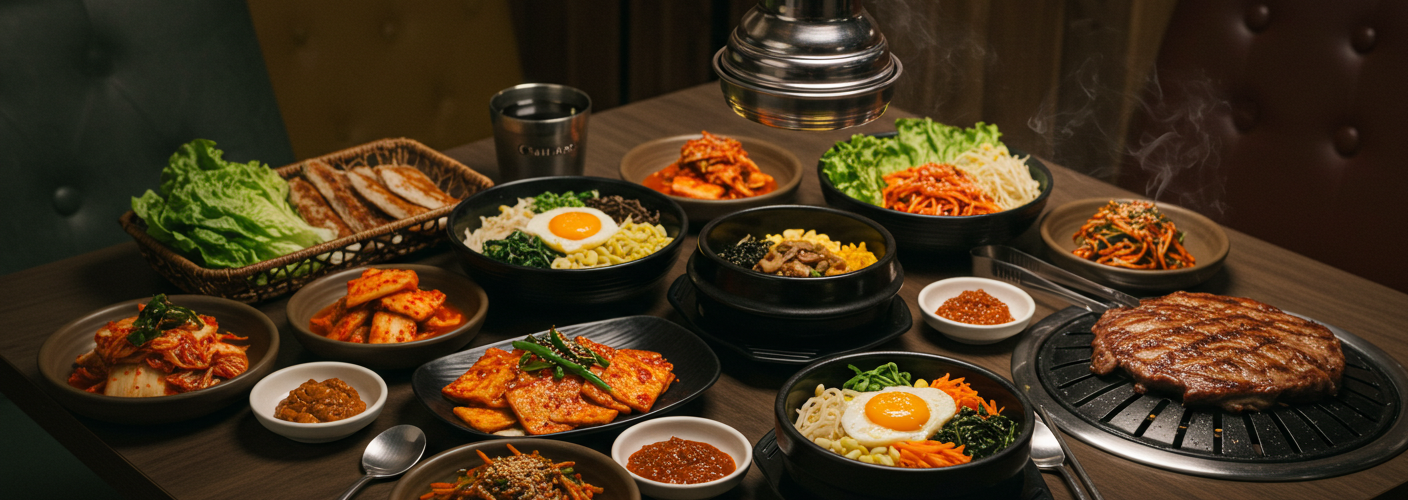When it comes to food, South Korea offers a vibrant array of tastes, textures, and traditions that reflect its rich cultural history. From street food stalls in bustling markets to elegant dining experiences, the culinary scene in South Korea is a feast for the senses. Whether you’re a foodie exploring international cuisines or a curious traveler looking to immerse yourself in local flavors, South Korean food promises to delight and surprise.
The Heart of Korean Cuisine: Kimchi
No discussion of South Korean food can begin without mentioning kimchi, the nation’s most iconic dish. This fermented side dish, typically made with napa cabbage and seasoned with a blend of chili pepper, garlic, and ginger, is not just a staple of Korean cuisine; it is also celebrated for its health benefits. The complex process of fermentation imparts unique flavors and probiotics that enhance gut health, making it a must-try for anyone visiting the country.
Hearty Main Dishes: BBQ and Stews
Korean BBQ is a social experience that brings friends and families together around the grill. Diners choose from an array of marinated meats, including bulgogi (thinly sliced beef) and galbi (short ribs), which are grilled right at the table. The meal is often accompanied by an assortment of banchan, or side dishes, which can include pickled vegetables, spicy tofu, and more.
Another cornerstone of Korean food is the country’s hearty stews, known as jjigae. Kimchi jjigae, a spicy kimchi stew with pork, tofu, and vegetables, is immensely popular, especially during the colder months. Similarly, Sundubu jjigae features silky soft tofu in a spicy broth, often topped with an egg. These comforting dishes embody the spirit of Korean hospitality and warmth.
The Street Food Scene
One of the best ways to experience South Korean culture is through its vibrant street food scene. As you stroll through bustling markets such as Gwangjang Market or Myeongdong, you’ll find vendors serving tempting treats. Tteokbokki, spicy rice cakes slathered in a sweet and spicy sauce, and hotteok, sweet pancakes filled with brown sugar and nuts, are just a few of the must-try snacks. These culinary delights offer a taste of Korea’s creativity and love for bold flavors.
Unique Ingredients: A Focus on Freshness
Korean cuisine is characterized by its reliance on fresh ingredients. The use of seasonal vegetables and high-quality proteins is paramount in creating flavorful dishes. Ingredients like gochugaru (Korean chili flakes), sesame oil, and doenjang (fermented soybean paste) are staples that add depth to the flavor profile of many meals. The emphasis on fermentation across various dishes not only enhances flavor but also reflects a traditional preservation method that has stood the test of time.
Desserts and Beverages: A Sweet Ending
No meal is complete without a sweet treat, and South Korea offers a delightful array of desserts. Bingsu, a refreshing shaved ice dessert topped with sweetened condensed milk, fruit, and red beans, is perfect for cooling down in the summer. For a simpler pleasure, try patbingsu, a traditional dessert made with sweetened red beans and crushed ice.
Additionally, the beverage scene in South Korea complements its food culture beautifully. Traditional tea, such as barley tea, offers a calming end to a meal, while soju, a popular distilled liquor, is often enjoyed alongside food in social settings.
In conclusion, exploring South Korean food is an adventure that goes beyond just eating. It opens a window into the rich history and vibrant culture of a nation. From the bold flavors of kimchi to the social allure of BBQ, every dish tells a story. So, whether you’re dining in a restaurant or enjoying street food, savor every bite and discover the heart of South Korea through its delectable cuisine.




Add comment